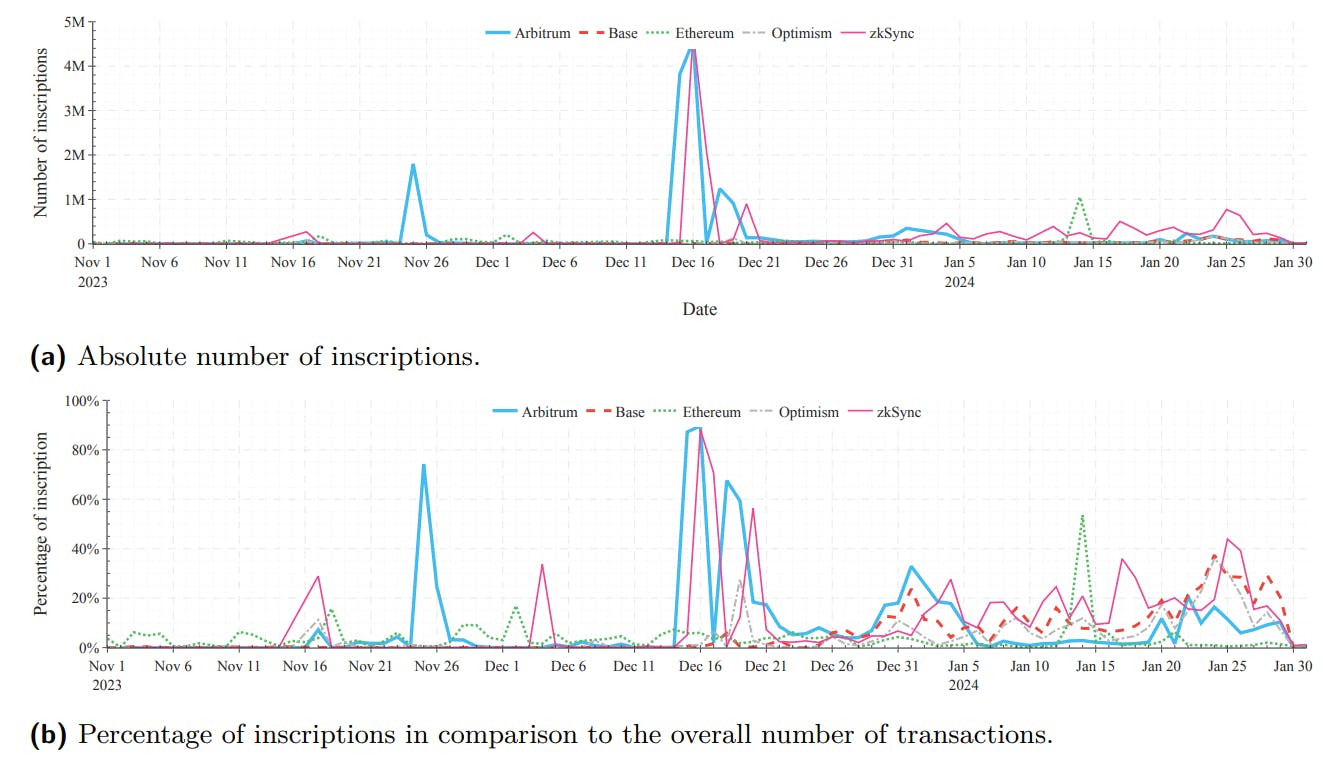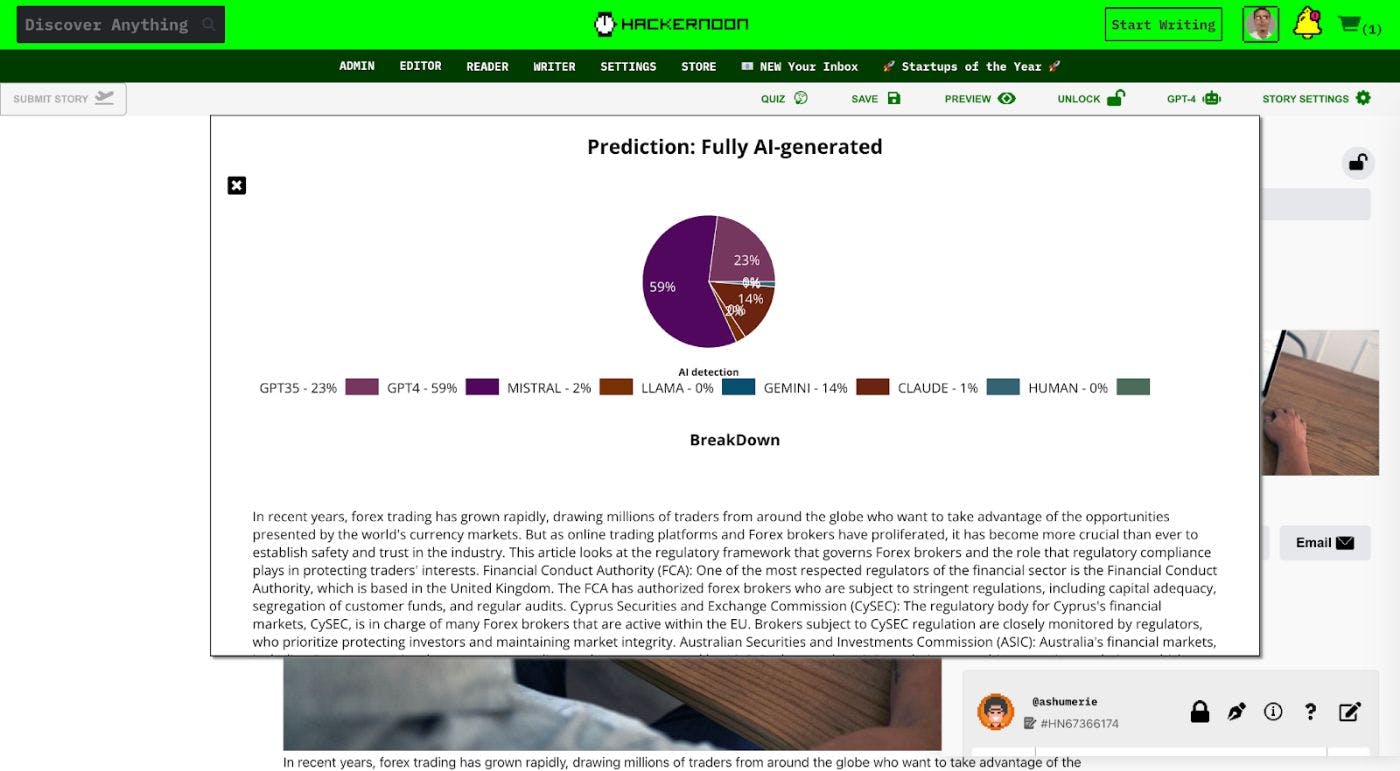Table of Links
Abstract and 1. Introduction
1.1 Research Questions and Contributions
-
Related Work
-
Background
-
Inscriptions and ordinals
4.1 Operation Types
4.2 Comparison with NFTs and ERC-20s
-
Data Collection
-
Empirical Analysis and 6.1 Overall Transactions
6.2 Inscriptions Characterization
6.3 Inscription Trading
6.4 Impact on Gas Fees
-
Discussion
-
Conclusion and References
5 Data Collection
In our study, we analyze the inscriptions recorded on Ethereum and its major EVM-compatible rollups: zkSync Era, Arbitrum, Optimism, and Base. From these L2s, zkSync Era is a ZK rollup, whereas other chains are optimistic rollups.
To achieve this, we collected blockchain data from various sources. For zkSync, sd use data obtained from an archive node and a Web3-compatible API for zkSync Era. For Arbitrum, Base, Ethereum, and Optimism, we use data sources from Nansen BigQuery [24]. These data sources enable us to collect comprehensive data containing all information recorded on evaluated chains. This includes data about blocks, transactions, and events (or logs triggered during the execution of smart-contracts) specifically related to inscriptions. Table 2 provides an overview of the specifics of our dataset.
Our focus is on blockchain data associated with inscriptions. While a significant portion of inscriptions involves the issuance of self-transfer transactions (i.e., where issuers initiate a transfer to their own address), we adopt a broader perspective. This involves considering instances where inscriptions are added to the chain, irrespective of whether through a self-transfer or not. This is important to capture the total fees users spent on inscriptions.
To identify these inscriptions on-chain, we specifically search for transactions with input call data starting with “0x646174613a”, representing “data:” in ASCII. This criterion establishes crucial conditions for recognizing inscriptions within the blockchain. The blockchains with the most number of transaction inscriptions in our dataset were zkSync Era and Arbitrum. In total, we found 17,054,466 transactions containing inscriptions in our zkSync Era data set issued by 481,687 addresses and added to 2,809,054 blocks. Similarly, we identified 16,309,035 transactions containing inscriptions in Arbitrum, issued by 118,544 addresses and added to 3,575,299 blocks. The average number of inscriptions per block are 6.07 and 4.56 for zkSync Era and Arbitrum, respectively. We provide similar statistics for Base, Ethereum, and Optimism chains in Table 2. This dataset forms the basis for our empirical analysis of inscriptions.
The distribution of inscription transactions per address is highly skewed towards a few participants, as shown in Table 3. Most inscription issuers initiated at least three transactions related to inscriptions. Arbitrum exhibited the highest median, with at least six transactions per issuer. Table 3 also highlights that a small number of issuers were responsible for a significant fraction of the total inscriptions. For instance, a single issuer accounted for 67,713 transactions to claim their inscriptions, followed by zkSync Era with 40,770 transactions.
Authors:
(1) Johnnatan Messias, Matter Labs;
(2) Krzysztof Gogol, Matter Labs, University of Zurich;
(3) Maria Inês, Silva Matter Labs;
(4) Benjamin Livshits, Matter Labs, Imperial College London.












